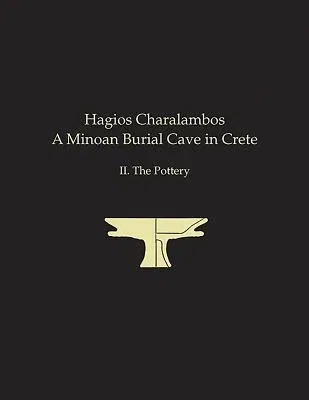The finds from the cave at Hagios Charalambos in the Lasithi Plain
illustrates secondary burial practices in Early and Middle Bronze Age
Crete. The cavern adds to our knowledge of Early and Middle Minoan
Lasithi and illuminates the function of the cave at Trapeza, which has
close parallels for most classes of objects found at Hagios Charalambos.
Most of the pottery from the site is made locally, but a selection of
imports from elsewhere in Crete ranges in date from EM I or earlier to
MM IIB. The pottery shows a shift in the use of imports during the
site's history, reflecting a change in economic and/or political
dominance and influence in Lasithi. Typical of pottery associated with
burials, the types of vessels were mostly used for pouring and drinking
liquids. Other small vessels probably contained precious oils, liquids,
and unguents. The local offering tables would have been carried by a
short stem and could hold a liquid or solid offering. The pottery shows
that the people who deposited their dead in the secondary burial cave at
Hagios Charalambos were in contact with ceramic production centers in
East Crete, the Mesara, Knossos, the Pediada, and Malia. This range of
influences speaks not only of trade relations and political spheres of
influence but also of tastes in pottery production and consumption. The
finds from the cave at Hagios Charalambos in the Lasithi Plain
illustrates secondary burial practices in Early and Middle Bronze Age
Crete. The cavern adds to our knowledge of Early and Middle Minoan
Lasithi and illuminates the function of the cave at Trapeza, which has
close parallels for most classes of objects found at Hagios Charalambos.
Most of the pottery from the site is made locally, but a selection of
imports from elsewhere in Crete ranges in date from EM I or earlier to
MM IIB. The pottery shows a shift in the use of imports during the
site's history, reflecting a change in economic and/or political
dominance and influence in Lasithi. Typical of pottery associated with
burials, the types of vessels were mostly used for pouring and drinking
liquids. Other small vessels probably contained precious oils, liquids,
and unguents. The local offering tables would have been carried by a
short stem and could hold a liquid or solid offering. The pottery shows
that the people who deposited their dead in the secondary burial cave at
Hagios Charalambos were in contact with ceramic production centers in
East Crete, the Mesara, Knossos, the Pediada, and Malia. This range of
influences speaks not only of trade relations and political spheres of
influence but also of tastes in pottery production and consumption.

